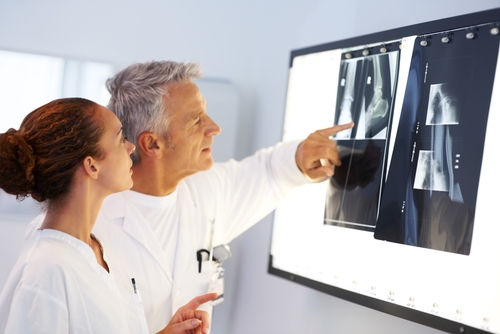4 important facts about stem cell research in orthopedics
It is very common for adults to experience chronic pain in their muscles and joints as they grow older. In the past, the only option that individuals had to eliminate the painful side effects of conditions like osteoporosis was replacement surgery of the affected muscles. In fact, the National Institutes of Health noted that almost 800,000 people undergo knee or hip replacements every year in the U.S. However, stem cell therapy treatments are becoming another popular option for patients looking for relief from joint conditions or injuries.
Stem cell treatments use the patient's stem cells to treat joints, such as the knees, shoulders, feet, ankles and hips, that are still causing pain after nonsurgical procedures and treatment methods. Injuries to more sensitive areas like the spine have also been improved with the help of stem cell therapies. As this form of treatment in orthopedics is still a relatively innovative procedure, surgeons may want to know a little more about it. Here are a few facts about stem cell research that physicians should know.
1. Adult stem cells from several tissues are used for therapies
According to the American Academy for Orthopaedic Surgeons, there are two main stem cells that scientists work with, adult stem cells and embryonic stem cells. However, because adult stem cells are more tissue-specific, they are used most commonly in stem cell therapies. The most popular source of these adult stem cells is the bone marrow, where most surgeons rely on stromal cells, a type of mesenchymal stem cell. In the right environment, these can differentiate into cells that make up the musculoskeletal system, explained the AAOS. They assist the body in forming new tendons, ligaments and articular cartilage.
There has been a number of reports over the past few years on the presence of adult stem cells in tissues other than bone marrow. Recent research has shown that using stem cells in the skin, liver, intestines and brain can be effective at developing new stem cell therapies.
2. New therapies are on the horizon
Stem cell treatments are currently being developed to regenerate articular cartilage and to heal tendons, ligaments and bone fractures. For example, as bone defects that have traditionally been treated with solid grafts on the fracture can take a while to heal, stem cell therapy places stem cells on the bone graft to enhance the healing process. For injuries or defects for the ligaments and tendons, treatments where mesenchymal stem cells are used as a part of the main repair process to speed up the healing of connective tissue, such as that which makes up the Achilles tendon, are also on the horizon.
3. Stem cell treatments are particularly popular among athletes
As torn ligaments and tendons are common among professional athletes, many have chosen stem cell therapies to heal potentially career-ending injuries, explained Joshua G. Hackel, M.D., from Andrews Institute for Orthopaedics & Sports Medicine in Florida. Stem cell treatments speed up the recovery time for many injuries and are less invasive than a lot of surgical procedures that were once needed to correct defects. As more successful results of these stem cell procedures continue to emerge, this type of therapy is expected to grow in popularity among athletes.
4. Treatments for prevalent diseases are expected in the next several years
While there are some stem cell therapies that are already offered by orthopedic surgeons – many of which have had successful results – and others expected to be offered by surgeons in the near future, there are also stem cell treatments for many conditions like ischemic brain strokes, Type 1 diabetes, Alzheimer's disease and Parkinson's that are in the early experimental phases. Patients may see these therapies offered by their orthopedic surgeons with the next five to 10 years, according to the AAOS.



